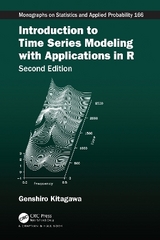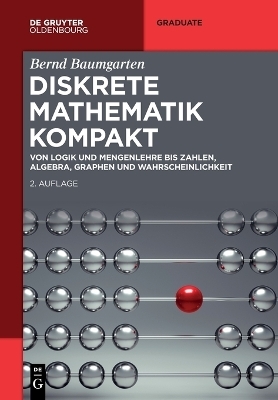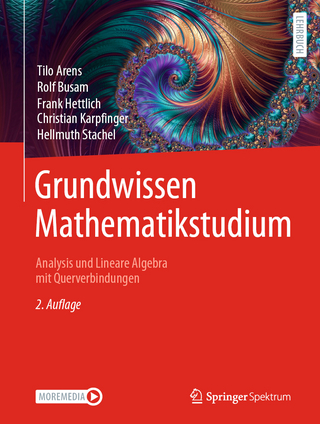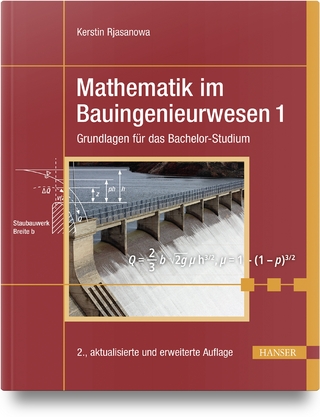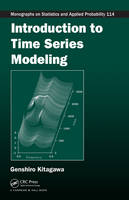
Introduction to Time Series Modeling
Chapman & Hall/CRC (Verlag)
978-1-58488-921-2 (ISBN)
- Titel erscheint in neuer Auflage
- Artikel merken
In time series modeling, the behavior of a certain phenomenon is expressed in relation to the past values of itself and other covariates. Since many important phenomena in statistical analysis are actually time series and the identification of conditional distribution of the phenomenon is an essential part of the statistical modeling, it is very important and useful to learn fundamental methods of time series modeling. Illustrating how to build models for time series using basic methods, Introduction to Time Series Modeling covers numerous time series models and the various tools for handling them.
The book employs the state-space model as a generic tool for time series modeling and presents convenient recursive filtering and smoothing methods, including the Kalman filter, the non-Gaussian filter, and the sequential Monte Carlo filter, for the state-space models. Taking a unified approach to model evaluation based on the entropy maximization principle advocated by Dr. Akaike, the author derives various methods of parameter estimation, such as the least squares method, the maximum likelihood method, recursive estimation for state-space models, and model selection by the Akaike information criterion (AIC). Along with simulation methods, he also covers standard stationary time series models, such as AR and ARMA models, as well as nonstationary time series models, including the locally stationary AR model, the trend model, the seasonal adjustment model, and the time-varying coefficient AR model.
With a focus on the description, modeling, prediction, and signal extraction of times series, this book provides basic tools for analyzing time series that arise in real-world problems. It encourages readers to build models for their own real-life problems.
Genshiro Kitagawa is the Director-General of the Institute of Statistical Mathematics in Tokyo, Japan.
Introduction and Preparatory Analysis
Time Series Data
Classification of Time Series
Objectives of Time Series Analysis
Preprocessing of Time Series
Organization of This Book
The Covariance Function
The Distribution of Time Series and Stationarity
The Autocovariance Function of Stationary Time Series
Estimation of the Autocovariance Function
Multivariate Time Series and Scatterplots
Cross-Covariance Function and Cross-Correlation Function
The Power Spectrum and the Periodogram
The Power Spectrum
The Periodogram
Averaging and Smoothing of the Periodogram
Computational Method of Periodogram
Computation of the Periodogram by Fast Fourier Transform
Statistical Modeling
Probability Distributions and Statistical Models
K-L Information and the Entropy Maximization Principle
Estimation of the K-L Information and Log-Likelihood
Estimation of Parameters by the Maximum Likelihood Method
Akaike Information Criterion (AIC)
Transformation of Data
The Least Squares Method
Regression Models and the Least Squares Method
Householder Transformation Method
Selection of Order by AIC
Addition of Data and Successive Householder Reduction
Variable Selection by AIC
Analysis of Time Series Using ARMA Models
ARMA Model
The Impulse Response Function
The Autocovariance Function
The Relation between AR Coefficients and the PARCOR
The Power Spectrum of the ARMA Process
The Characteristic Equation
The Multivariate AR Model
Estimation of an AR Model
Fitting an AR Model
Yule–Walker Method and Levinson’s Algorithm
Estimation of an AR Model by the Least Squares Method
Estimation of an AR Model by the PARCOR Method
Large Sample Distribution of the Estimates
Yule–Walker Method for MAR Model
Least Squares Method for MAR Model
The Locally Stationary AR Model
Locally Stationary AR Model
Automatic Partitioning of the Time Interval
Precise Estimation of a Change Point
Analysis of Time Series with a State-Space Model
The State-Space Model
State Estimation via the Kalman Filter
Smoothing Algorithms
Increasing Horizon Prediction of the State
Prediction of Time Series
Likelihood Computation and Parameter Estimation for a Time Series Model
Interpolation of Missing Observations
Estimation of the ARMA Model
State-Space Representation of the ARMA Model
Initial State of an ARMA Model
Maximum Likelihood Estimate of an ARMA Model
Initial Estimates of Parameters
Estimation of Trends
The Polynomial Trend Model
Trend Component Model—Model for Probabilistic Structural Changes
Trend Model
The Seasonal Adjustment Model
Seasonal Component Model
Standard Seasonal Adjustment Model
Decomposition Including an AR Component
Decomposition Including a Trading-Day Effect
Time-Varying Coefficient AR Model
Time-Varying Variance Model
Time-Varying Coefficient AR Model
Estimation of the Time-Varying Spectrum
The Assumption on System Noise for the Time-Varying Coefficient AR Model
Abrupt Changes of Coefficients
Non-Gaussian State-Space Model
Necessity of Non-Gaussian Models
Non-Gaussian State-Space Models and State Estimation
Numerical Computation of the State Estimation Formula
Non-Gaussian Trend Model
A Time-Varying Variance Model
Applications of Non-Gaussian State-Space Model
The Sequential Monte Carlo Filter
The Nonlinear Non-Gaussian State-Space Model and Approximations of Distributions
Monte Carlo Filter
Monte Carlo Smoothing Method
Nonlinear Smoothing
Simulation
Generation of Uniform Random Numbers
Generation of Gaussian White Noise
Simulation Using a State-Space Model
Simulation with Non-Gaussian Model
Appendix A: Algorithms for Nonlinear Optimization
Appendix B: Derivation of Levinson’s Algorithm
Appendix C: Derivation of the Kalman Filter and Smoother Algorithms
Appendix D: Algorithm for the Monte Carlo Filter
Bibliography
| Erscheint lt. Verlag | 1.5.2010 |
|---|---|
| Reihe/Serie | Chapman & Hall/CRC Monographs on Statistics and Applied Probability |
| Zusatzinfo | Copyright info must be in book - done 2nd print!; 5/18/10 C/R Pg COPYRIGHT INFRINGEMENT; 20 Tables, black and white; 80 Illustrations, black and white |
| Sprache | englisch |
| Maße | 156 x 234 mm |
| Gewicht | 594 g |
| Themenwelt | Mathematik / Informatik ► Mathematik |
| ISBN-10 | 1-58488-921-7 / 1584889217 |
| ISBN-13 | 978-1-58488-921-2 / 9781584889212 |
| Zustand | Neuware |
| Informationen gemäß Produktsicherheitsverordnung (GPSR) | |
| Haben Sie eine Frage zum Produkt? |
aus dem Bereich
